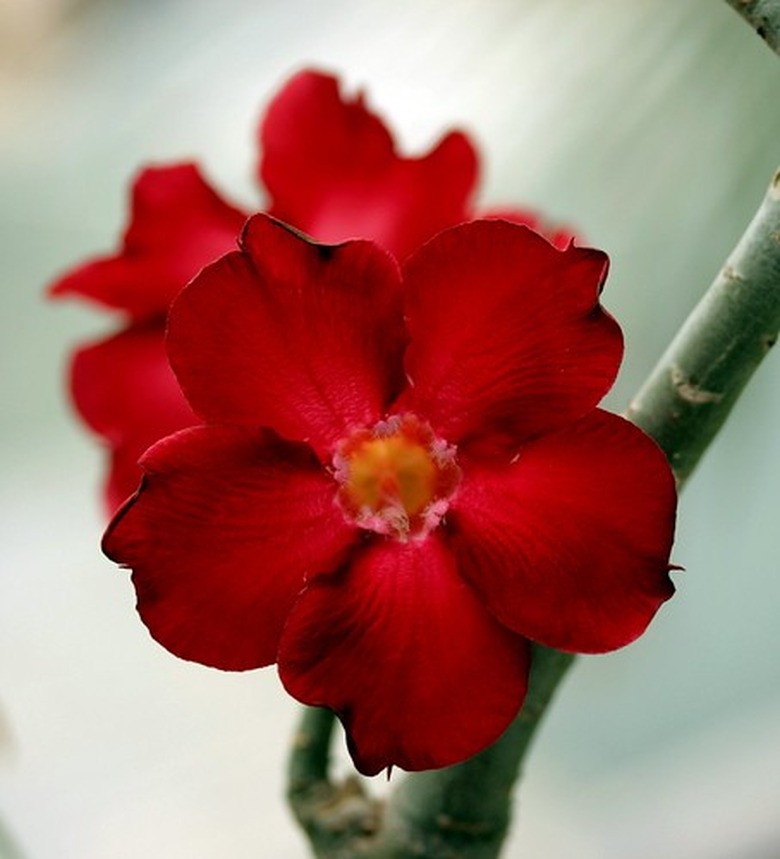Adenium Obesum Diseases
Adenium obesum, commonly called Desert Rose, is a long-lived succulent plant. It has thickened stems and a swollen base (caudex). The limbs are smooth with small green leaves. The trumpet-shaped flowers are white, rose or pink.
Desert Roses are hardy in Zones 10 and 11, and may continue blooming throughout the year. Plants in containers often go dormant during the winter season and lose their leaves.
Culture and Prevention
Most diseases of Desert Roses are caused by too much water, poor drainage or overhead watering. Proper planting and care can decrease the chance of a disease infecting the plants.
- Adenium obesum, commonly called Desert Rose, is a long-lived succulent plant.
- Plants in containers often go dormant during the winter season and lose their leaves.
Desert Roses should be planted in a well drained area, a raised bed, or a container with very good drainage. When the plants are actively growing, they should be watered thoroughly whenever the soil is dry. During dormancy, the plants should be watered only enough to keep the potting soil from completely drying out and hardening.
Desert Roses should not be watered from overhead. They should be watered in the early morning to allow the foliage and flowers time to dry before the damp nighttime hours.
Stem Rot
Stem Rot caused by a fungus is the most common disease of Desert Roses. The infected portion of the stem may be yellow or black. The decay may be wet or dry. A Desert Rose may heal itself by surrounding the infected area with new growth, called an abscission zone. Once an abscission zone is formed, the stem will snap off. If an abscission zone does not form, the infected stem should be cut back until there are no signs of discoloration in the stem tissue.
- Desert Roses should be planted in a well drained area, a raised bed, or a container with very good drainage.
- During dormancy, the plants should be watered only enough to keep the potting soil from completely drying out and hardening.
Other Rots
When a Desert Rose flower holds water, it may begin to rot. The rot spreads part way down the stem before the plant heals itself.
Caudex Rot affects the swollen base and main stem of Desert Roses. All the leaves on infected plants suddenly turn yellow and droop, but do not fall off. An infected plant usually dies, but some larger Desert Roses may heal themselves.
The leaves of Desert Roses affected with Root Rot also turn yellow, but they fall off. All Desert Roses infected with Root Rot die.
- When a Desert Rose flower holds water, it may begin to rot.
- The leaves of Desert Roses affected with Root Rot also turn yellow, but they fall off.
Leaf Disease
Leaf Disease occurs when the foliage of a Desert Rose plant is continually wet. The foliage turns brown and begins to rot. A white fungal growth appears on the infected leaves, which mat together. The disease spreads to soft stems. Infected plant parts should be removed and destroyed.
Warning
All parts of the Desert Rose are poisonous. Hunters in Africa used the sap to make poisonous arrows to kill fish and game.
- Leaf Disease occurs when the foliage of a Desert Rose plant is continually wet.
- A white fungal growth appears on the infected leaves, which mat together.
